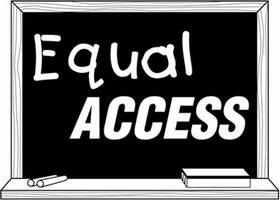If you are a SCAN user, by now you have heard the bad news
that the SCAN technology tool at TregoED is going offline in June. The good news is that SCAN is more than an
online tool, SCAN is a process for helping your kids be better thinkers. You don’t need no stinkin’ computer for
that! Your brain is the best and most
complex piece of technology you will ever own.
And just like any technology, you can always learn to use it better.
SCAN, simply put is an acronym for 4 questions that can help
take a complex problem with different perspectives and break it down into
manageable pieces:
1.
Stop and
look at the situation….what are the most important issues? What are people
concerned about?
2.
Clarify those issues – What do you mean by
that? When you ask a student to explain
themselves you make them dig deeper than the facts. What are the arguments for and against these
issues?
3.
Ask what is most important. Again, this step makes your students evaluate
arguments and prioritize issues, a process that requires critical thinking.
4.
Now what?
The last step of this critical thinking strategy asks students to determine
what should be done, synthesize a solution, make a plan. Use this graphic organizer to get them thinking with any scenario!
Drive them to think!
So here are some recent hot topics (culled from Izzit.org
and Newsela) that just beg for some SCAN critical thinking:
Would it be a bad thing to wipe out a species…if it was a
mosquito? http://www.npr.org/sections/goatsandsoda/2016/02/20/467094440/would-it-be-a-bad-thing-to-wipe-out-a-species-if-its-a-mosquito
Do you think we should switch to Universal time? https://www.washingtonpost.com/news/worldviews/wp/2016/02/12/the-radical-plan-to-destroy-time-zones-2/
Do you think we should stop having Daylight Savings Time?
Does google make us smarter or keep us from thinking? http://www.npr.org/sections/alltechconsidered/2016/02/05/465699380/ok-google-where-did-i-put-my-thinking-cap
Should we keep the $100 bill? http://www.wsj.com/articles/the-plot-to-kill-the-100-bill-1455667926?mod=djem10point
Should parents have their child's permission before they post their pictures online?
http://well.blogs.nytimes.com/2016/03/08/dont-post-about-me-on-social-media-children-say/?_r=1
Should parents have their child's permission before they post their pictures online?
http://well.blogs.nytimes.com/2016/03/08/dont-post-about-me-on-social-media-children-say/?_r=1
Have students read the article, research a point of view, develop
an argument, determine which issues are most important and devise a plan of
action. Let them work in groups, debate,
collaborate and negotiate. Check out this easy SCAN graphic organizer - smart
thinking!

